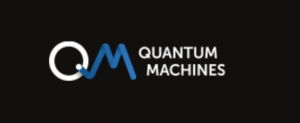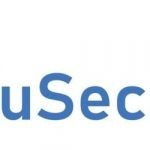Quantum News Briefs March 30: Quantum Machines Selected by Alice & Bob for their Advanced Quantum Computer, Paving the Path to Quantum Advantage; Quantum Arrives in Your Body; Fujitsu & Osaka University develop new quantum computing architecture; “Swedish Quantum Agenda” update & document

Quantum News Briefs March 30: Quantum Machines Selected by Alice & Bob for their Advanced Quantum Computer, Paving the Path to Quantum Advantage; Quantum Arrives in Your Body; Fujitsu & Osaka University develop new quantum computing architecture; “Swedish Quantum Agenda” update & document.
Quantum Machines Selected by Alice & Bob for their Advanced Quantum Computer, Paving the Path to Quantum Advantage
 Quantum Machines announced on May 28 that Alice & Bob, a cutting-edge quantum computer vendor with a mission to develop universal, error-free quantum computers, have chosen Quantum Machines’ advanced quantum control platform, the OPX+, to power their advanced quantum computer.
Quantum Machines announced on May 28 that Alice & Bob, a cutting-edge quantum computer vendor with a mission to develop universal, error-free quantum computers, have chosen Quantum Machines’ advanced quantum control platform, the OPX+, to power their advanced quantum computer.
Alice & Bob has demonstrated the ability to create qubits that are resistant to bit-flip errors, which occur when the state of a qubit changes unintentionally due to external factors such as noise or interference. The company’s approach uses superconducting cat qubits, which their experimental evidence shows to be designed to eliminate bit-flip errors. This breakthrough discovery provides a shortcut to developing a scalable universal quantum computer, with potentially hundreds of times fewer qubits.
Quantum Machines a Platinum Sponsor for IQT Nordics June 6-8, 2023
Quantum Machines’ OPX+ incorporates a unique Pulse Processor Unit (PPU) that integrates classical processing and control flow at the heart of the quantum control system, orchestrating quantum and classical operations from the same device. The PPU allows the implementation of complex quantum error corrections and error mitigation in real time. A unique quantum control platform, OPX is designed from the ground up to enable ultra-low latency quantum-classical processing, dramatically accelerating quantum performance by orders of magnitude. Built to scale, the solution supports the need for managing increasing qubit counts in a way that is both economical and efficient.When evaluating system performance in real-world deployments, the most critical criterion is the end-to-end functionality of the system,” said Theau Peronnin, co-founder and CEO of Alice & Bob. “In this regard, Quantum Machines’ OPX stands out with its exceptional real-time performance, seamless scalability, and user-friendly interface. These capabilities are crucial for us as we strive to realize our vision of developing fault-tolerant quantum computers.
“Alice & Bob is one of the few companies who have a clear vision of how to achieve quantum advantage,” said Itamar Sivan, co-founder and CEO of Quantum Machines. ” Their technology offers ways to bypass the difficulties encountered with quantum error correction and scaling to large fault tolerant quantum systems. Working together, we aim to create a shortcut to quantum advantage – and advance the realization of practical quantum computers.” Click here to read the announcement in-entirety.
Quantum Arrives in Your Body

Quantum sensors are just taking off — and the government is investing, according to Ruth Reader, a reporter at POLITICO covering the intersection of health care and technology. Quantum News Briefs summarizes Reader’s March 28 article.
Quantum sensors use atomic-level technology to detect super-subtle signals, like changes in the electric fields around a neuron, which researchers haven’t been able to access in the past.
One of the most interesting to researchers is biomedical research. In the human body, quantum sensors can detect electrical signals from our brains and other organs that previously were just not possible to track.
“Quantum sensing is simply measuring very weak electrical and magnetic signals in biological systems,” said Sitta Gurusingham, a drug discovery consultant.
He offers an example: If scientists could measure the electrical field around a neuron in the brain of a healthy individual and compare it to the magnetic field around a neuron in the brain of a patient with Alzheimers, the hypothesis is that these magnetic fields will look different.
“Then if we treat it with the drug, now we can see whether that becomes normal or not,” he said.This kind of data could help pharmaceutical companies know if drugs are actually working, which in turn could lead to more effective drugs.
NCATS and the National Science Foundation are exploring quantum sensing to enhance biomedical research (the Department of Energy is also using these sensors in quantum physics research), and their hopes for what these sensors can accomplish are high. At a NIH-hosted workshop on quantum sensing earlier this year, Dr. Joni Rutter, Director of National Center for Advancing Translational Science, talked about why quantum sensing is so needed right now.
“There are over 10,000 diseases that we know about,” she said. “Ninety-five percent don’t have treatments or cures.” She continued to say that given it takes about 10-15 years to develop a particular therapeutic for these diseases, and $2.6 billion per therapeutic. Quantum sensors could deliver a level and granularity of data that could increase that speed. Click here to read Politico article in-entirety.
Fujitsu and Osaka University develop new quantum computing architecture, accelerating progress toward practical application of quantum computers
 Fujitsu and Osaka University’s Center for Quantum Information and Quantum Biology (QIQB) recentlhy revealed the development of a new, highly efficient analog rotation quantum computing architecture, representing a significant milestone toward the realization of practical quantum computing. Quantum News Briefs summarizes.
Fujitsu and Osaka University’s Center for Quantum Information and Quantum Biology (QIQB) recentlhy revealed the development of a new, highly efficient analog rotation quantum computing architecture, representing a significant milestone toward the realization of practical quantum computing. Quantum News Briefs summarizes.
The new architecture reduces the number of physical qubits required for quantum error correction – a prerequisite for the realization of fault-tolerant quantum computing – by 90% from 1 million to 10,000 qubits. This breakthrough will allow research to embark on the construction of a quantum computer with 10,000 physical qubits and 64 logical qubits (4), which corresponds to computing performance of approximately 100,000 times that of the peak performance of conventional high performance computers.
Moving forward, Fujitsu and Osaka University will further refine this new architecture to lead the development of quantum computers in the early FTQC era, with the aim of applying quantum computing applications to a wide range of practical societal issues including material development and finance.
Fujitsu and Osaka University have been promoting joint R&D in quantum error correction technology including new quantum computation architectures for the early FTQC era at the “Fujitsu Quantum Computing Joint Research Division,” a collaborative research effort of the QIQB, established on October 1, 2021 at the campus of Osaka University as part of Fujitsu’s “Fujitsu Small Research Laboratory” program. Read entire announcement by clicking here.
“Swedish Quantum Agenda” update & document
 Quantum News Briefs is updating its news coverage of the “Swedish Quantum Agenda” document and today providing readers with the correct link to the 24-page PDF version of the document online. Click here to download a copy.
Quantum News Briefs is updating its news coverage of the “Swedish Quantum Agenda” document and today providing readers with the correct link to the 24-page PDF version of the document online. Click here to download a copy.
This report has identified nine areas that are necessary to develop to strengthen Sweden’s position within quantum technology:
1. Need for a Swedish national objective and strategy for quantum technology
2. Coordination of quantum technology activities is necessary
3. Increased support for education in quantum technology
4. Need for support to research infrastructures
5. Ensured long-term financial support for quantum research
7. Identification of applications and engagement with industry
8. Quantum standards at the international level
9. Fostering of Nordic, EU, and international collaboration
Sandra K. Helsel, Ph.D. has been researching and reporting on frontier technologies since 1990. She has her Ph.D. from the University of Arizona.





















